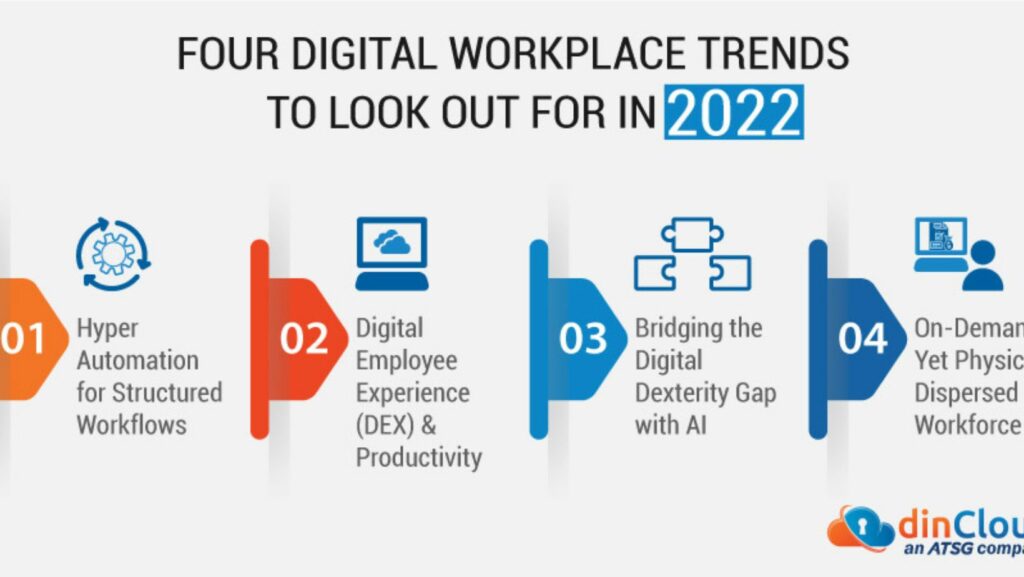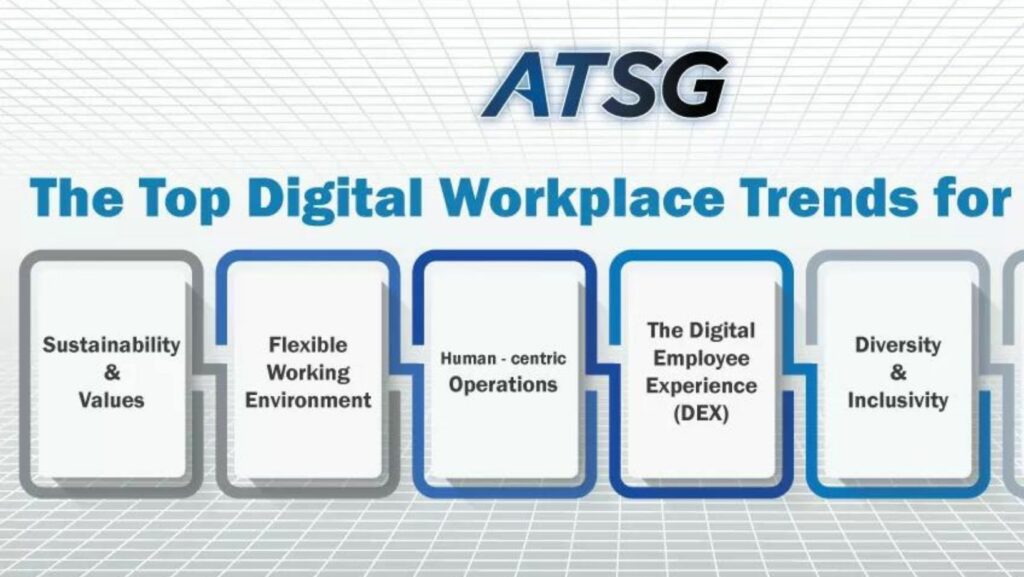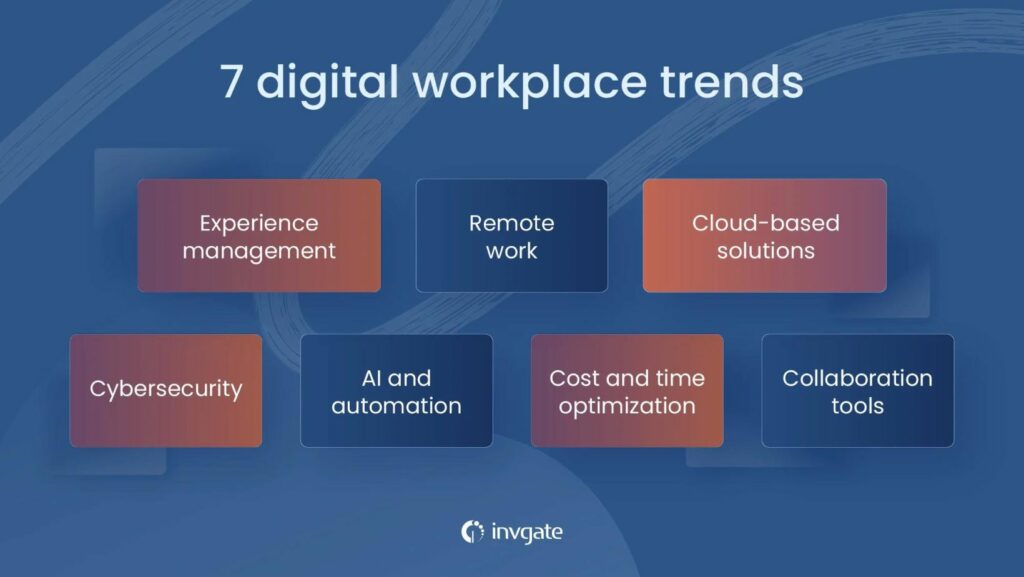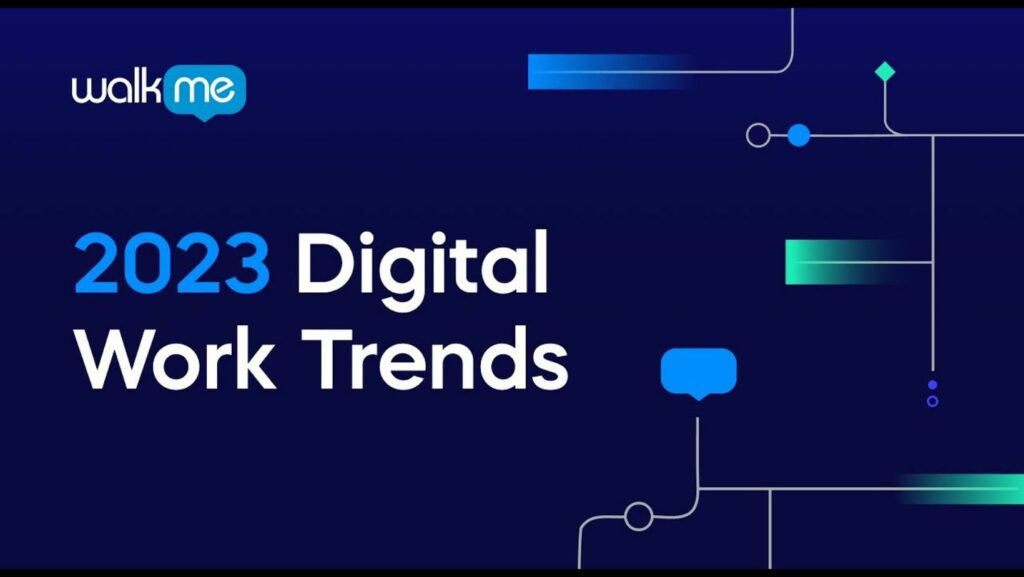Digital Workplace Trends
As a digital workplace enthusiast, I constantly monitor the latest trends shaping how we work and collaborate in today’s fast-paced environment. The evolution of technology has brought about significant changes in how organizations operate, with online time clock systems and digital workplace trends solutions at the forefront of this transformation.

One key trend that stands out is the shift towards remote and flexible work arrangements, accelerated by recent global events digital workplace trends. Companies are increasingly adopting virtual collaboration tools to ensure seamless communication and productivity among geographically dispersed teams. This shift not only promotes work-life balance but also enhances employee satisfaction and retention rates.
Moreover, artificial intelligence, automation, and data analytics are revolutionizing traditional workflows, enabling businesses to streamline processes, digital workplace trends, make data-driven decisions, and deliver personalized experiences to customers. Embracing these technologies allows organizations to stay competitive in a rapidly changing landscape while driving innovation and efficiency across various functions.
The Rise of Remote Work
In recent years, the concept of remote work has surged in popularity. As organizations adapt to changing work dynamics and technological advancements, many companies have embraced remote work as a viable option for their employees. This shift has been largely facilitated by the digital transformation that has taken place across various industries.

One key driver behind the rise of remote work is the advancement of communication technologies. With tools like video conferencing, instant messaging platforms, and project management software becoming more sophisticated and user-friendly, teams can now collaborate effectively from different locations. This enhanced connectivity has made it easier for employees to work remotely without feeling isolated or disconnected.
Another factor contributing to the growth of remote work is the changing attitudes towards work-life balance. Employees today seek greater flexibility in how and where they work, and many value the autonomy that comes with remote positions. Companies that offer remote opportunities often find it easier to attract and retain talent, leading to increased productivity and employee satisfaction.
The COVID-19 pandemic further accelerated the adoption of remote work practices globally. As businesses were forced to quickly pivot to remote operations to ensure continuity, many discovered that they could maintain productivity levels while reducing overhead costs associated with traditional office spaces. This realization has prompted organizations to reevaluate their approach to workplace design and consider implementing hybrid models that combine in-person and remote work arrangements.
Adoption of Artificial Intelligence
Artificial Intelligence (AI) adoption is gaining momentum across various industries as organizations recognize its potential to streamline operations, enhance productivity, and drive innovation. Here are key trends shaping the adoption of AI in the digital workplace:

Integration with Routine Tasks
Incorporating AI into daily workflows is becoming commonplace as businesses seek to automate repetitive tasks and increase efficiency. From chatbots handling customer inquiries to AI algorithms optimizing supply chain logistics, integrating AI technology into routine processes is revolutionizing how work gets done.
Personalized User Experiences
One significant trend in AI adoption is its ability to deliver personalized user experiences. By leveraging machine learning algorithms, companies can analyze vast amounts of data to tailor services and products according to individual preferences. This level of personalization not only enhances customer satisfaction but also fosters brand loyalty.
Data-Driven Decision Making
AI empowers organizations to make data-driven decisions by providing valuable insights from complex datasets. Through predictive analytics and pattern recognition, AI systems help businesses forecast trends, identify opportunities for growth, and mitigate risks. The shift towards leveraging AI for decision making underscores its transformative impact on business strategies.
Enhanced Cybersecurity Measures
With the rise of sophisticated cyber threats, integrating AI-driven cybersecurity solutions has become imperative for safeguarding sensitive information. AI tools can detect anomalies in network behavior, thwart potential security breaches proactively, and fortify digital defenses against evolving threats. As cyber attacks grow in complexity, the reliance on AI for bolstering cybersecurity measures continues to escalate.
Improved Employee Productivity
AI technologies such as virtual assistants and automation tools are reshaping how employees interact with digital systems and accomplish tasks. By delegating mundane activities to AI-driven platforms, workers can focus on high-value projects that require human creativity and critical thinking skills. This shift not only enhances employee productivity but also fosters a culture of continuous learning and upskilling.

